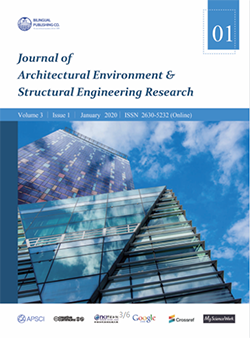-
2126
-
1860
-
1636
-
1586
-
1526
Evaluating the use of Drones in the area of Transportation/Construction
DOI:
https://doi.org/10.30564/jaeser.v3i1.1787Abstract
Drones are proving out as a valuable tool and growing quickly in the world of technological advances. The applications of these vehicles are spreading widely in the areas of remote sensing, real time monitoring, goods delivery, security, defense, surveillance, infrastructure inspection. Although, the intent behind creating this tool was remote sensing. Smart drones will be the next big innovation and modification, which would have much wider applications especially in the field of infrastructure where it can reduce risks and lower costs. Current direct evaluation techniques are tedious, and the information caught is frequently not led in a precise manner with the areas tested not being geographically correct and the resulting reports being delivered past the point of no return. These were the reasons, which have increased the demand and usage of unmanned vehicles. In this research paper, we present critical review of main advancements of Drones in the area of transportation and agriculture. We present all the research related to civil applications in those areas and challenges including traffic monitoring, Bridge condition assessment, Roadway asset detection and many other applications related to infrastructure inspection enhancement. The paper also contributes with a discussion on the opportunities, which are opened, and the challenges that need to be addressed. Findings from the case studies, it is reported that around 25% of the bridges in united states are deficient and need continuous monitoring for enhancements to prevent any hazard. Unmanned vehicles could be a great help in monitoring these bridges and other important components of transportation, which can efficiently minimize the cost as well as the time spent on inspection for each of this component, as manual inspection requires labor and time which would be subsequently reduced by incorporating the usage of drones in the area of transportation.
Keywords:
Drone applications, transportation, construction, civil applicationsReferences
[1] Cai, G. L.. A Brief Overview on Miniature FixedWing Unmanned Aerial. 8th IEEE Conference on Control and Automation. 2010: 285-290.ISBN: 9781424451951
[2] Camara, D.. Cavalry to the rescue: Drones fleet to help rescuers operations over disasters. IEEE Con-ference on Antenna Measurements and Applications,2014.
[3] Colin Brooks, R. J.. Evaluating the Use of Drones for Transportation. Michigan Tech Research Institute,2015.
[4] Elliot, T., Hall, M.. Sea robot-assisted. IEEE Robotics and Automation Magazine, 2011, 18(2), 5876204:96-107.
[5] Liu, M. C.. Unmanned Aerial Vehicles in the Construction Industry. 53rd ASC Annual International Conference Proceedings, 2017.
[6] Liu, P., Chen, A., Huang, Y. N., Han, J.-Y., Lai, J.-S.,Kang, S.C Tsai.. A Review of rotorcraft unmanned aerial vehicle (UAV) developments and applications in civil engineering. Smart Structures and Systems,2014, 13(6): 1065-1094.
[7] Miller, P. C. Agriculture and Power Grid Inspection Are Among the Fastest Growing UAV. http://www.virtualstrategy.com/2015/09/18/agriculture-and-pow
[8] Meir, P.. Humanitarian in the sky: drones for disaster response, 2014.
[9] Molla, D.. Drones for AEC: How every stage of a building project can benefit from drone technology,2015.
[10] Neil D. Opfer, r. D.. Unmanned Aerial Vehicle Applications and Issues for Construction. 121st ASCE annual conference, 2014.
[11] S.Pedrozo, F.. Power and space in drone age- A literature review. Germany: Insitut de Geographie, n.d.
Downloads
How to Cite
Issue
Article Type
License
Copyright © 2020 Kasim A Korkmaz

This is an open access article under the Creative Commons Attribution-NonCommercial 4.0 International (CC BY-NC 4.0) License.




 Kasim A Korkmaz
Kasim A Korkmaz





